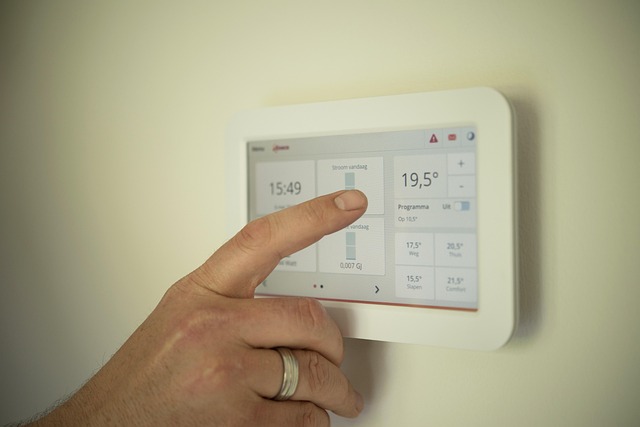Assess your home's needs (bedrooms, zones, HVAC systems, regional conditions) before installing a smart thermostat. Choose a model with learning capabilities, smartphone apps, voice assistant compatibility, and integration with existing smart home systems for energy efficiency and comfort. Integrate the thermostat via Wi-Fi, set personalized schedules per zone, create profiles for family members, and enjoy ideal temperatures while saving energy.
Looking to boost your home’s energy efficiency? Programming a new smart thermostat is an excellent step. This guide will walk you through the process, from understanding your home’s unique needs before installation to seamlessly integrating and configuring settings for personalized comfort. By choosing the right model and optimizing your thermostat’s capabilities, you can significantly reduce energy costs and create a more comfortable living environment.
- Assess Your Home's Unique Requirements Before Installation
- Choose the Right Smart Thermostat Model for Optimal Efficiency
- Seamlessly Integrate and Configure Settings for Personalized Comfort
Assess Your Home's Unique Requirements Before Installation

Before installing a new smart thermostat, it’s crucial to assess your home’s unique requirements. This involves understanding your living space’s specific needs and challenges, such as the number of bedrooms, the presence of different zones with varying heating/cooling demands (like a sunroom or home office), and any existing HVAC systems in place. These factors will determine the best placement for your thermostat—whether it’s strategically located in the bedroom to optimize comfort during sleep or positioned centrally to regulate temperature throughout the entire home efficiently.
Consider also the environmental conditions of your region, such as extreme temperatures or humidity levels, which can affect both heating and cooling systems. By tailoring the smart thermostat setup to these factors, you ensure optimal performance and maximize the benefits of DIY smart home upgrades for homeowners—including enhanced energy efficiency and greater control over your indoor environment. The installation process will be smoother and more effective if you start by understanding these unique aspects of your living space.
Choose the Right Smart Thermostat Model for Optimal Efficiency

When it comes to optimizing energy efficiency and comfort in your home, choosing the right smart thermostat model is paramount. Different thermostats cater to various needs and environments, from smart home integration tips that involve connecting multiple devices for comprehensive control, to more specialized models designed for larger or unique spaces. Before purchasing, assess your home’s size, number of zones, and heating/cooling system type.
Consider features like learning capabilities (adjusting settings based on habits), remote access via smartphone apps, and compatibility with voice assistants. Remember, the ideal smart thermostat should not only allow you to resolve smart temperature control issues at home but also integrate seamlessly into your existing smart home ecosystem for effortless control and monitoring.
Seamlessly Integrate and Configure Settings for Personalized Comfort

After installing a new smart thermostat, seamlessly integrating and configuring its settings is key to achieving personalized comfort in your home. Start by connecting the device to your Wi-Fi network, ensuring it’s securely linked to your smartphone or tablet via the manufacturer’s app. This enables remote access and allows you to adjust temperature settings from anywhere, at any time, offering a level of convenience far beyond traditional thermostats.
Personalize your comfort by setting individual schedules for different zones in your home. Many smart thermostats allow you to create profiles for each family member, learning their preferences over time. This ensures that everyone enjoys their ideal temperature without compromising the other’s comfort. Consider the environmental benefits too; programming the thermostat to reduce heating or cooling during unoccupied periods can significantly contribute to energy savings, making it a wise choice for both your wallet and the planet, especially when compared to traditional thermostats. Plus, if you ever encounter any issues, resources like an emergency plumber Bromsgrove can provide assistance without needing professional help for every minor setback.
Programming a new smart thermostat isn’t as complex as it may seem. By assessing your home’s unique needs, selecting the right model, and integrating seamless settings, you can achieve optimal energy efficiency and personalized comfort. Remember to consider factors like climate zones, occupancy patterns, and personal preferences during the installation process for the best results. With these steps, you’ll be well on your way to a smarter and more efficient home environment.
